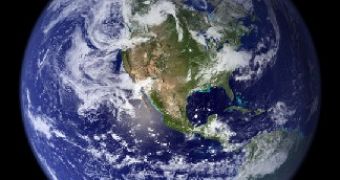When one thinks about the problems the world is facing today, one thinks of financial crisis, tense international relationships or pollution, but there are, actually, many people who would wish to have to worry only on these accounts. Changing all these wouldn't affect the fact that about 1 of 8 persons in the whole world (854 million) suffers from malnutrition, or that there are millions who live in extreme poverty.
Jeffrey Sachs, director of The Columbia University's Earth Institute in New York and advisor to Ban Ki-moon, United Nations Secretary General, hopes that NASA technology could help overcome the negative effects of global warming on worldwide poverty. In addition, he asks for the allocation of one single cent out of every $100 to observing the Earth, the real effects of human influence on nature, as well as to developing a way to stop and reverse the negative impact.
The first time NASA saved us, he says, was when its Nimbus-7 weather satellite showed the hole in the ozone layer. Subsequent analyses indicated that the hole was a result of chlorofluorocarbons emission from refrigerants or aerosol sprays, which led to immediate measures and usage prevention. “I think a picture was worth a billion lives, in this case,” Sachs said.
Now, he wants NASA to provide an accurate diagnosis on the reasons for the global warming, so that experts can address more properly problems like extreme poverty, and come up with more efficient solutions. He doesn't expect people in prosperous countries to send food to those in poor ones, but instead to help the latter feed themselves, by providing the necessary means for this task. Still, seeds and fertilizers would be useless without proper water sources. This is where global warming comes in, by affecting both the existent water resources and the way new ones could be provided.
“We have so many complex forces right now that we really don't know what we're doing,” said Sachs, referring to man's impact on climate. And then, addressing NASA directly, he continued, “My guess is that we're going to be counting on you to be snapping pictures of [those forces and effects], and integrating the missions and the modeling to be able to identify the next debacles and thresholds and risks that we're facing.” The cost, he believes, is minimal if compared with the outcome – “We have a $15 trillion economy. One cent out of $100 for Earth observation. I think that's a pretty good buy.”
The only thing left to do now is to implement a proper education system that would address this matter accordingly. In Sachs' own words, “We have to be able to convey and explain to the public why this is so crucial. It's not going to break the bank. We've got to save the world, not worry about breaking the bank, and fortunately it's much cheaper than it looks.”

 14 DAY TRIAL //
14 DAY TRIAL //